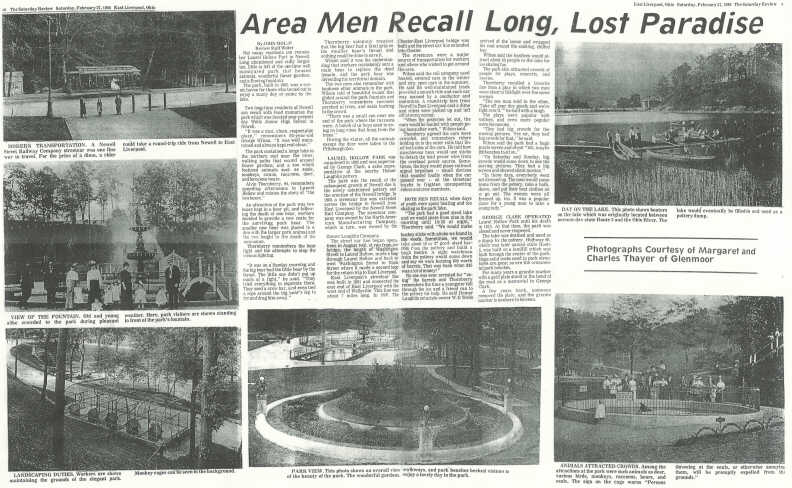 The following article comes from the research collection of Darlene Nossaman by way of David Schaefer. It appeared in an edition of The Saturday Review dated February 27, 1988. The article was written by Review staff writer, John Mollo. The photographs were courtesy of Margaret and Charles Thayre of Glenmoor. It is presented here in its entirety with permission from The Review.
The following article comes from the research collection of Darlene Nossaman by way of David Schaefer. It appeared in an edition of The Saturday Review dated February 27, 1988. The article was written by Review staff writer, John Mollo. The photographs were courtesy of Margaret and Charles Thayre of Glenmoor. It is presented here in its entirety with permission from The Review.
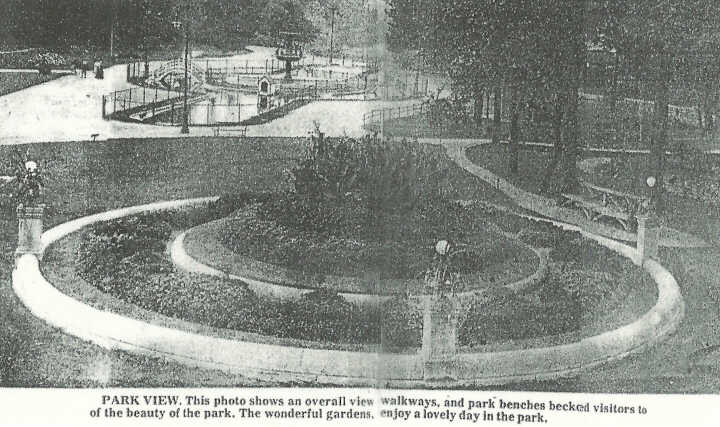 Not many residents can remember Laurel Hollow Park in Newell. Long abandoned and sadly forgotten, little is left of the one-time well manicured park that housed animals, wonderful flower gardens, and a flowing fountain.
Not many residents can remember Laurel Hollow Park in Newell. Long abandoned and sadly forgotten, little is left of the one-time well manicured park that housed animals, wonderful flower gardens, and a flowing fountain.
The park, built in 1905, was a scenic haven for those who turned out to enjoy a sunny day or picnic by the lake.
Two long-time residents of Newell can recall with fond memories the park which was located near present day Wells Junior High School in Newell.
"It was a nice, clean, respectable place," remembers 92-year-old George Wilson. "It was well maintained and always kept real clean."
The park contained a large lake in the northern end near the river, walking paths that wound around flower gardens, and a zoo which featured animals such as seals, monkeys, swans, raccoons, deer, and ferocious bears.
Alvin Thornberry, 94, remembers spending afternoons in Laurel Hollow and relates the story of "the two bears."
An attraction of the park was two bears kept in a bear pit, and following the death of one bear, workers decided to provide a new mate for the surviving park bear. The smaller new bear was placed in a den with the larger park animal and the two fought to the death of the newcomer.
Thornberry remembers the bear fight and the attempts to stop the vicious fighting.
"It was on a Sunday morning and the big bear had the little bear by the throat. The little one didn't put up much of a fight," he said. "They tried everything to separate them. They used a crow bar, and even tied a rope around the big bear's leg to try and drag him away."
Thornberry solemnly recalled that the big bear had a fatal grip on the smaller bear's throat and nothing could be done to save it.
Wilson said it was his understanding that workers mistakenly sent a male bear to replace the dead female, and the park bear was defending his territorial domain.
The two men also remember with fondness other animals in the park. Wilson told of beautiful swans that glided around the park fountain and Thornberry remembers raccoons perched in trees, and seals barking to the crowd.
"There was a small run near one end of the park where the raccoons were. A bunch of us boys used to swing on long vines that hung from the trees."
During the winter, all the animals except for the deer were taken to the Pittsburgh Zoo.
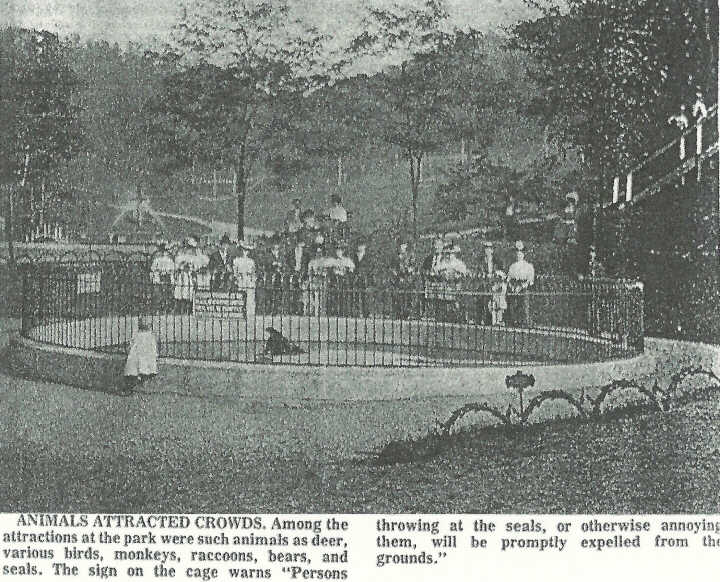 Laurel Hollow Park was completed in 1905 and was supervised by George Clarke, a sales representative at the nearby Homer Laughlin pottery.
Laurel Hollow Park was completed in 1905 and was supervised by George Clarke, a sales representative at the nearby Homer Laughlin pottery.
The park was the result of the subsequent growth of Newell due to the newly established pottery and the erection of the Newell bridge. In 1905 a streetcar line was extended from East Liverpool by the Newell Street Rail Company. The streetcar company was owned by the North American Manufacturing Company, which in turn, was owned by the Homer Laughlin Company.
The streetcar line began operations in August 1905. It ran from the bridge, the length of Washington Street to Laurel Hollow, made a loop through Laurel Hollow and back on west Washington Street to Ninth Street where it made a second loop for the return trip to East Liverpool.
East Liverpool's streetcar line was built in 1891 and connected the east end of East Liverpool with the west end of Wellsville. This line was about 7 miles long. In 1897, the Chester-East Liverpool bridge was built and the streetcar line extended into Chester.
The streetcars were a major source of transportation for workers and others who wished to get around the area.
Wilson said the rail company used heated, covered cars in the winter and airy, open cars in the summer. He said the well-maintained track provided a smooth ride and each car was manned by a conductor and motorman. A round-trip fare from Newell to East Liverpool cost a dime and riders were picked up and left off at every corner.
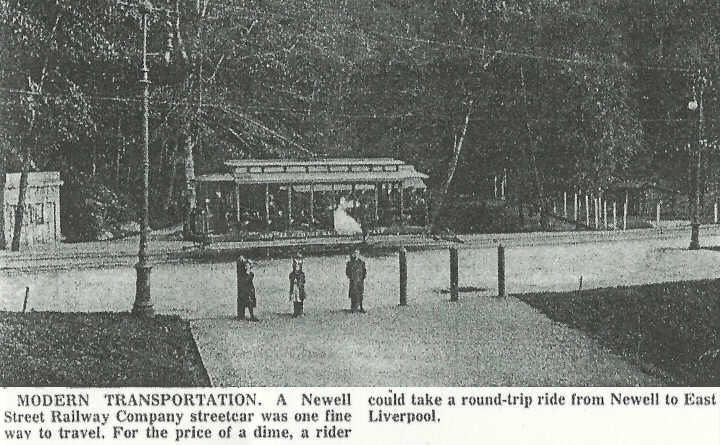
"When the potteries let out, the cars would be loaded with people going home after work," Wilson said.
Thornberry agreed the cars were crowded and remembers riders holding on to the outer rails that lined both sides of the cars. He told how mischievous boys would use sticks to detach the lead power wire from the overhead power source. Sometimes the boys would place railroad signal torpedoes - small devices that sounded loudly when the car passed over - on the streetcar tracks to frighten unsuspecting riders and crew members.
Both men recall when days of youth were spent boating and ice skating on the park lake.
"The park had a good sized lake and we would skate from nine in the morning until 10:30 at night," Thornberry said. "We would make hockey sticks with sticks we found in the woods. Sometimes we would take about 15 or 20 good size barrels from the pottery and build a huge bonfire. A night watchman from the pottery would come down and say we were burning $45 worth of barrels. That was back when $45 was a lot of money!"
No one was ever arrested for "using" the barrels and Thornberry remembers the time a youngster fell though the ice and a friend ran to the pottery for help. He said Homer Laughlin principle owner W. E. Wells arrived at the scene and wrapped his coat around the soaking, chilled boy.
Wilson said the bonfires would attract about 50 people to the lake for ice skating fun.
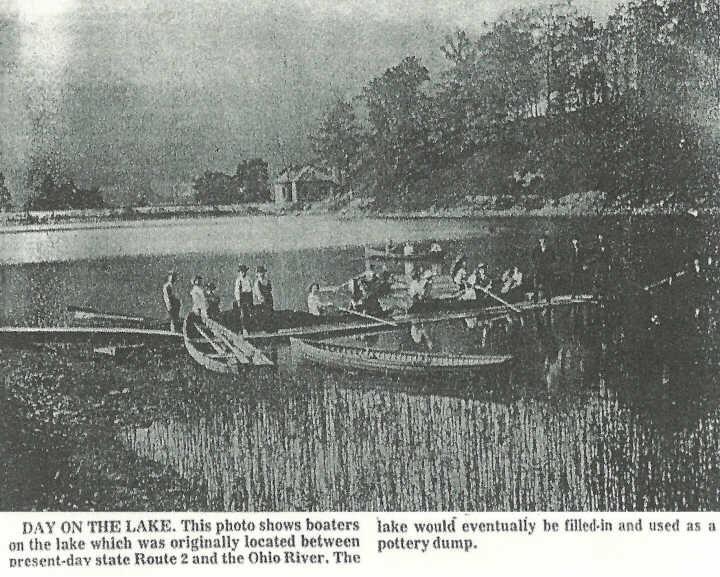
The park also attracted crowds of people for plays, concerts, and movies.
Thornberry recalled a favorite line from a play in which two men were about to fist fight over the same woman.
The one man said to the other, "Take off your dry goods and we'll fight over it." he said with a laugh.
The plays were popular with visitors, and even more popular were the movies.
"They had big crowds for the moving pictures. Yes sir, they had big crowds for that," he said.
Wilson said the park had a huge movie screen and about "100 maybe 200 benches to sit on."
"On Saturday and Sunday, big crowds would come down to see the moving pictures. They had a big screen and showed silent movies."
"In those days, everybody went out dressed up. The men would come home from the pottery, take a bath, shave, and put on their best clothes on to go out. The women were all dressed up, too. It was a popular place for a young man to take a young lady."
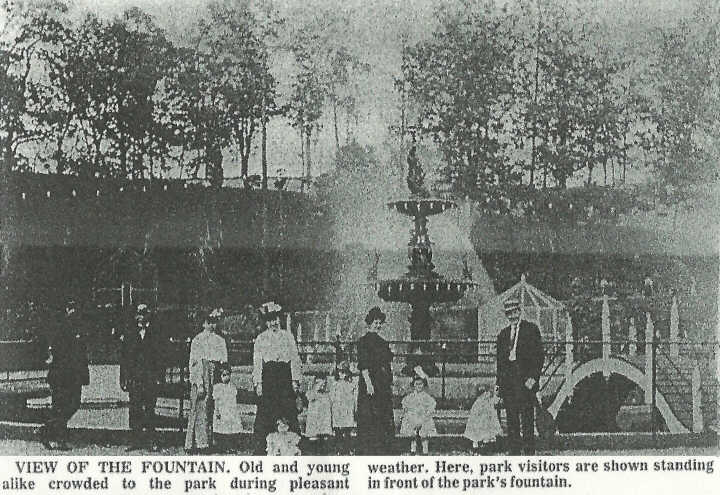 George Clarke operated Laurel Hollow Park until his death in 1913. At that time, the park was closed and never reopened.
George Clarke operated Laurel Hollow Park until his death in 1913. At that time, the park was closed and never reopened.
The lake was drained and used as a dump by the pottery. Highway 66, which was later named state Route 2, was built on a landfill which was built through the center of the park. Huge solid rocks used in the park structures are gone; so are the ornamental park benches.
For many years a granite marker with a gold plate stood in the bend of the round as a memorial to George Clarke.
A few years back, someone removed the plate, and the granite marker is nowhere to be seen.
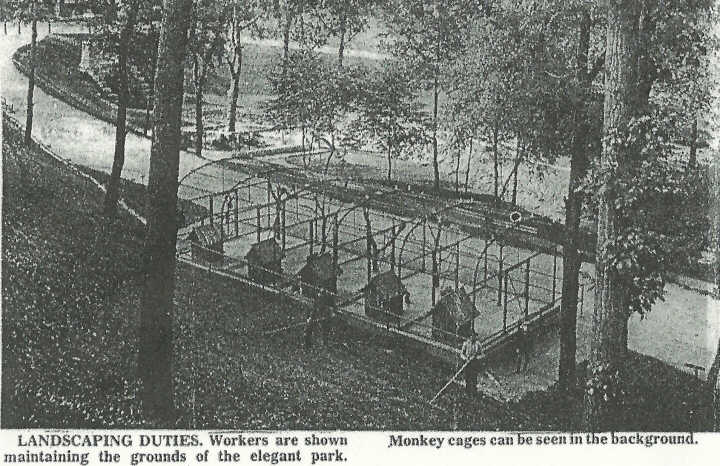
|